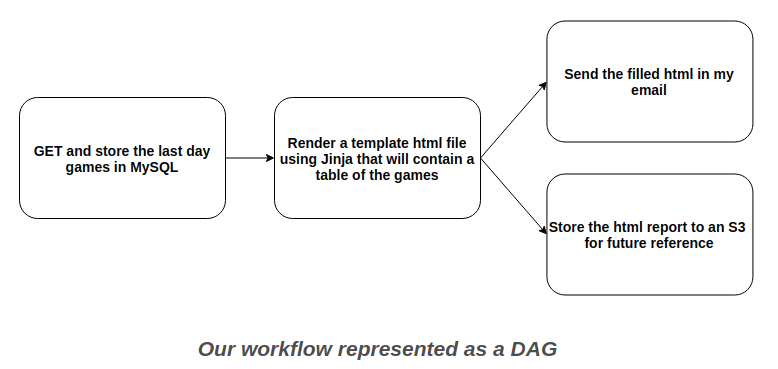A series of bite sized projects in the fields of data science, data engineering and machine learning, explored in blog-like notebooks. Through my studying years, both undergraduate and graduate, I discovered that in order to fully understand something, you must "play" with it. Well, this repo is a Jupyter playground of algorithms, technologies and frameworks that I personally find interesting. Hopefully, if you have accidentally stumbled upon this repo, you will find something interesting too. Feel free to send any feedback.
Nb Viewer
Tags: PageRank, graph node importance
PageRank is a well-known algorithm proposed by the founders of Google and had a major role at its success when it first
started as a search engine. In general, PageRank aims at finding the most important nodes on a huge graph of webpages.
In order to understand its inner workings I implemented it from scratch using numpy only. I start by assuming a perfect
graph (no spider traps, no dead-ends) and gradually lift these assumptions. Finally, I examine the memory complexity
and present the final algorithm which could work on any graph regardless of its shape and size.
Tags: Airflow, report scheduling, monitoring
This mini project is a little bit different. I saw a really nice presentation on Airflow and it seemed like a useful and well-made tool.
Airflow is a platform created by the community to programmatically author, schedule and monitor workflows.
In our case we want to schedule a daily report that summarizes Valerios' last day chess games. Valerios (valerios1910 is his nickname in the chess streets)
is a friend of mine, who is currently on the journey of becoming a GM (no, not really, but he is good). Our goal is to monitor his progress through daily reports.

Airflow is a really nice tool for workflows like these, able to scale to an infinite amount of scheduled workflows.
Now concerning running, things are a bit trickier. Firstly, there is not a Jupyter notebook, the code is included in
the airflow/ directory. Then we must follow these steps:
- Install Airflow, I have provided a
install.shfor Ubuntu, but I suggest looking into Airflow documentation since you must set a number of environmental variables - Start the scheduler,
airflow scheduler - Start the webserver for a super cool UI,
airflow webserver --port 8080
You can look into the code (airflow/) which has some comments but I suggest first reading the tutorial in airflow.
Nb Viewer
Tags: Gaussian processes, regression, pymc3
Recently, I started learning about Gaussian processes (GPs). Gaussian processes is a flexible tool that can model many problems that we deal with in the field of Data Science. In this notebook, I showcase a small part of that flexibility dealing with a simple regression problem, predicting challenge rating of dnd monsters given their health points. I start by fitting a polynomial model using MCMC which I compare with the least squares fit. Then, I use a gaussian process to solve this regression problem and present its advantages over the two methods above.
Nb Viewer
Tags: data gathering, visualization
In the field of software development, one thing that makes everyone happy is finding security vulnerabilities. You cannot expect to have the perfect code that is fully robust and secure forever. New vulnerabilities are created and the testing must be constant. As this GitHub post says
Today the process for addressing a new vulnerability is often ad hoc. Forty percent of new vulnerabilities in open source don’t have a CVE identifier when they’re announced, meaning they’re not included in any public database. Seventy percent of critical vulnerabilities remain unpatched 30 days after developers have been notified.
Covid-19 is something much more than a security vulnerability. However, I will attempt to show that some principles apply in this case too. We will attempt to show if the number of tests correlates with how well the country manages to deal with the virus.
Nb Viewer
Tags: timeseries analysis, polynomial regression, ARIMA
My thesis professor is giving a Machine Learning class on his MSc students in the field of bioinformatics. Their first assignment is to gather data and forecast the future number of deaths and cases using polynomial regression. The main focus is to find the least complex model that fits our data using Occam's razor or as Einstein said
“Everything should be made as simple as possible, but no simpler.”
I achieve this using the BIC metric which penalties higher complexity models (higher degree polynomials).
I then proceed to evaluate other models such as ARIMA.
A simple time series forecasting model will not be the perfect model since it won't be able to capture events like lockdowns but the simplicity allows us of more interpretable results which I am aiming to explore.
Disclaimer: In any way should any of the models I have written be actually used for forecasting of future number of cases. I have done this for educational reasons. There is the field of epidemiology which one should consult for accurate forecasting which takes into account more factors than the shape of the current curve.
Nb Viewer
Tags: PCA, noise reduction, image processing
A friend of mine is having his thesis on fire recognition on images. Also, I have used PCA on many tasks of dimensionality reduction or, in general, study about the meaning of eigenvectors of the covariance matrix of a dataset.
So combining the above I thought of using PCA as a technique of noise reduction on these fire images.
You can download and play with the notebook. The dataset that I used is not available but any image dataset
can be used.
Tip: For a greater understanding of the notebook I suggest printing the .shape of the arrays